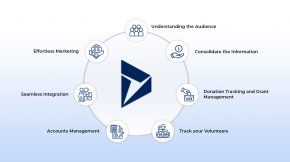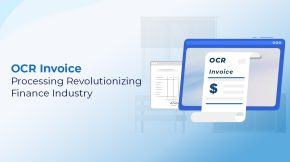The Surprising Impact of Generative AI in OCR: What You Need to Know
Optical character recognition (OCR) has been around for decades, providing the critical capability to convert scanned documents and images into editable and searchable text. However, OCR technology still faces limitations in accuracy and versatility, especially when handling complex document layouts, poor image quality, and handwritten text.
This is where the rise of generative AI in OCR can truly revolutionize OCR, taking it to the next level. In this extensive technical blog post, we’ll explore how the unique capabilities of generative AI in OCR can overcome the challenges of traditional OCR and unlock new possibilities across industries.
The Limitations of Traditional OCR Models
Before diving into how generative AI in OCR enhances OCR, let’s briefly recap the fundamentals of traditional OCR and its limitations:
– OCR software traditionally relies on template matching and computer vision techniques to recognize text. The OCR engine must be trained with labelled datasets of text in specific fonts, formats and styles.
– This dependence on predefined templates results in poor versatility. Traditional OCR struggles with non-standard layouts, handwritten text, artistic fonts, low image quality, and other variances.
– The accuracy plummets significantly when OCR processes documents outside of what it has been explicitly trained on. Any image distortions or noise can lead to misinterpretations. Any image distortions or noise can lead to misinterpretations, making it crucial to use high-quality visuals or design tools like VistaCreate
to enhance clarity before OCR processing.
– OCR engines have limited contextual understanding. They recognize text on a character-by-character basis without deeper comprehension of the context and semantics.
– Training and maintaining traditional OCR systems requires extensive human effort and laborious manual tuning. Updates to recognize new document types are difficult.
– Overall, traditional OCR lacks the flexibility and learning capability to handle the diversity of real-world documents. This leaves a huge gap in effectively digitizing many document types.
Generative AI models offer fundamentally more advanced capabilities compared to traditional OCR methods. Let’s explore the technical innovations that enable generative AI to overcome these challenges.
Leveraging Generative AI in OCR
Generative AI refers to AI systems that can generate new outputs and content based on their training data. This includes powerful deep learning techniques like generative adversarial networks (GANs) and transformer-based language models.
When applied to OCR use cases, generative AI can interpret document images holistically, with full contextual understanding. The key advantages are:
Unsupervised Pretraining on Diverse Text
Unlike traditional OCR, modern generative models can pre-train on massive text datasets in an unsupervised manner, without needing explicit human labelling. Popular models like BERT, GPT-4o and PaLM ingest hundreds of billions of words from books, web pages and documents.
Exposure to such diverse text allows the models to develop a strong understanding of real-world language structures, writing styles, and semantic relationships. This deep language comprehension provides a robust starting point for adapting the models to OCR tasks.
Vision-Language Pretraining
Leading-edge generative models are pretrained on multimodal data – combining both text and images. For example, CLIP model developed by OpenAI has been trained on 400 million image-text pairs from the internet.
This allows the models to gain a innate sense of associations between visual patterns and language. Models can then transfer this knowledge when processing document images for OCR, even for unseen document types.
Attention-Based Neural Architectures
Transformer-based neural networks underlie many major generative AI breakthroughs. The transformer architecture uses attention mechanisms to model global dependencies across the entire input, unlike CNNs in traditional OCR models.
This allows the AI model to actively focus on the most relevant parts of the document image as needed. The attention-based modeling provides huge benefits for detecting textual context and semantics.
Few-Shot and Zero-Shot Learning
A core strength of generative AI is the ability to learn from just a few examples or even zero examples of a new task. This few-shot learning capacity allows generative models to quickly adapt to new document types and domains.
For instance, by providing just a few annotated samples of a complex scientific paper, the model can learn to extract text from similar papers. No lengthy retraining is necessary unlike traditional OCR methods.
End-to-End Learning Capabilities
Generative models excel at end-to-end learning, where they jointly learn the interdependent steps of a task in an integrated manner. This enables them to optimize the OCR pipeline from image preprocessing to final text output holistically.
Traditional OCR systems rely on fragmented hand-engineered components like layout analysis, text localization, character recognition etc. Generative OCR brings all components together into one learnable neural model.
These unique properties of generative AI unlock game-changing opportunities for advancing OCR technology.
Let’s look at some of the exciting innovations when applied to real-world OCR challenges:
Overcoming Handwriting Recognition Limits
Recognizing handwritten text has historically been an Achilles heel for OCR systems. The diverse styles, shapes and sizes of human handwriting make it tremendously difficult to decipher.
Various approaches have been proposed over the years to tackle handwritten text recognition (HTR):
– Traditional template-matching methods fail miserably, given the extreme variability of handwriting.
– Feature engineering methods like extracting stroke information, gradients and contour analysis have shown limited success.
– Recurrent neural networks like LSTM have shown promising accuracy by modeling sequences of letters.
– Attention-based transformer models capture long-range dependencies in handwritten words and sentences.
However, because of the lack of large labeled training datasets, most handwriting recognition models can only handle limited vocabulary or certain languages.
This is where generative AI in OCR truly revolutionizes handwritten OCR:
Leveraging Self-Supervised Pretraining
Recent breakthrough models like OPT-175B from Meta AI and PaLM from Anthropic demonstrate the immense potential of self-supervised pretraining on unlabeled data.
By pretraining on vast quantities of scanned handwritten notes and documents, generative models can learn robust visual representations specifically for decoding handwriting, without needing any labeling.
PaLM model has been pretrained on images of handwritten mathematics formulas. This allows it to perform handwritten math formula recognition at 96% accuracy – surpassing previous state-of-the-art.
Combining Text and Visual Understanding
Advanced multimodal generative models integrate both text and vision capabilities within a single model. This allows combining visual analysis of handwriting shapes with language modeling of textual semantics.
The text understanding provides contextual cues to correct errors and ambiguities in visual recognition – leading to more accurate handwriting recognition.
Few-Shot Handwriting Adaptation
Due to the few-shot learning skills, generative models need just a few samples of a writer’s style to quickly adapt. For personalized handwriting recognition, users can provide a couple of paragraphs in their own handwriting. The model will then learn to interpret that specific style of handwritten characters.
This ability to customize with minimal samples makes generative models far more practical for real-world handwritten OCR compared to existing methods.
End-to-End Handwriting Recognition
Generative OCR techniques enable end-to-end handwriting recognition by holistically integrating the sequence of steps needed – from cleaning up input images, extracting stroke information, recognizing characters and incorporating language context.
This unified model is optimized as a whole for maximum handwriting recognition performance. Prior systems depend on fragmented components and rules heuristically patched together.
With these breakthrough advances, generative AI in OCR promises to finally crack the long-standing challenges of handwritten text OCR with unprecedented accuracy and flexibility.
Interpreting Complex Document Layouts
Beyond handwriting, traditional OCR also falters with complex document layouts containing multiple columns, figures, tables, headers, footnotes – common in scientific papers, financial reports and government documents.
The reasons for poor performance include:
– Fixed templates for segmenting document sections fail on complex unstructured layouts.
– Changings fonts, sizes and styles across sections confuse the OCR engine.
– Figures, tables and diagrams lack textual context for the OCR to leverage.
– Footnotes, citations and captions increase ambiguity in text localization.
– Columns and overlapping sections mislead the reading order and information flow.
Generative AI in OCR provides the advanced reasoning capabilities needed to handle these layout complexities:
Cognitive Understanding of Document Structure
The deep language pretraining of generative models equips them with an innate cognitive understanding of how documents are typically structured.
This allows the AI to logically infer the high-level semantics even in convoluted layouts – identifying probable headings, paragraphs, footnotes, citations etc. based on their contextual relationships.
Adapting to Different Writing Styles
Style transfer capabilities allow generative models to dynamically adapt to the varied fonts, sizes and text styles within a document. The visual style variations do not affect the meaning perceived by the model.
This continuity in semantic understanding seamlessly stitches together text extracted from diverse sections into a coherent reading flow.
Incorporating Non-Text Elements
The multimodal nature of generative AI in OCR allows incorporating non-textual document elements like charts, figures and tables to provide greater context.
For instance, a pie-chart visual can help the model determine that an adjacent paragraph is likely describing percentages or ratios. This improves the accuracy when extracting the actual text.
End-to-End Layout Understanding
Instead of relying on a predefined series of layout analysis steps, generative models can learn to holistically reason about document structure in an end-to-end manner.
The intimate interconnections between sections, style elements, non-text objects and textual semantics can be modeled in unity.
This allows for a more flexible and robust OCR approach for documents with widely varying designs and layouts. Generative AI in OCR holds the promise of finally enabling accurate conversion of even highly-complex document formats into accessible text.
Restoring Poor Quality Documents
Scanned printed documents often suffer from quality issues like faded text, speckles, skewed orientation, torn sections and more. Such imperfections severely hamper the reliability of conventional OCR methods.
While image enhancement techniques can help clean up scans, they are often insufficient for badly degraded documents. Images may lack the clarity needed to recognize characters accurately.
This is an area where the learned prior knowledge of generative models gives them an unique advantage:
Imagining Missing Text
Even for partially obscured or missing text, the surrounding legible context allows generative AI in OCR to plausibly predict the original text.
The models have learned strong statistical relationships between words and concepts from their diverse pretraining. This allows them to infer text quite accurately from limited cues.
Correcting Recognition Errors
The language modeling capabilities enable detecting OCR errors and determining the most probable words intended based on context. This acts as an AI spell-check and grammar-check correcting faulty text.
For instance, “cybersecurily” can be recognized as the intended word “cybersecurity” based on surrounding text about digital threats.
Denoising Images
Leveraging GAN architectures, generative models can reconstruct damaged portions of document images by effectively “imagining” the original undamaged appearance.
This enhanced image fed back into the OCR engine then produces much cleaner text interpretation. The models have learned to visually hallucinate lost image details.
End-to-End Document Restoration
The entire pipeline from image noise reduction to text error correction can be modeled jointly as an end-to-end document restoration problem.
This holistic approach allows generative AI in OCR to optimize the interplay between visual and textual improvements for mutual reinforcement.
Together, these capabilities make generative OCR exceptionally robust for handling even the most error-prone and eroded documents. It opens up accurate digitization for a wide array of damaged archival documents previously inaccessible to conventional OCR technology.
Adapting to Emerging Document Types
The world is constantly producing new forms of documents – from graphic-rich social media posts to complex webpages and dynamic PDF invoices. Yet, training traditional OCR engines to handle each new document type is slow and expensive.
This makes generative AI’s flexibility extremely valuable:
Rapid Adaptation with Few Examples
The few-shot learning skills of generative models allow quick adaptation to new document formats by providing just a few samples. For instance, 2-3 examples of a new invoice layout allow customizing the model specifically for that invoice format vs needing thousands of instances.
Learning Layout Patterns
Generative models can dynamically deduce layout patterns and structures from just a handful of document examples. Elements like headers, footers, columns and embedded tables are learned as abstractions. This layout knowledge transfers even to unseen document types.
Multi-Genre Pretraining
Pretraining on extremely diverse documents allows generative models to develop an innate versatility. They grasp the common underlying composition across document genres – enabling better generalization to unfamiliar documents.
Continuous Learning
With continuous learning, generative OCR models efficiently incorporate new document types over time by incrementally updating the parameters. No lengthy retraining of the entire model is necessary unlike traditional OCR.
This built-in learning agility makes generative AI in OCR massively valuable for keeping pace with accelerating innovation in document formats and styles. It prevents OCR systems from quickly becoming obsolete.
The Future of Generative AI in OCR
The rapid pace of innovations in deep learning and natural language processing suggests extremely exciting possibilities ahead for generative OCR technology:
– Multilingual models capable of handling documents globally in 100+ languages with equal expertise by training extensively cross-lingual data.
– Video OCR able to extract overlapped spoken and textual information from instructional videos, lectures and presentations using multimodal AI techniques.
– Document summarization to automatically generate abridged extracts and summaries showcasing key points within lengthy documents.
– Data structure preservation which recreates the original semantic hierarchical relationships between sections, paragraphs, tables etc. while extracting information.
– Document search engines that can rapidly search across millions of scanned books and records by indexing them via AI-powered OCR.
– Customization assistants that allow non-experts to easily tune models for their unique use cases via intuitive prompts and examples.
As computing power grows exponentially, the coming decade will unleash dramatic advances in OCR capabilities through the combination of massive neural networks and transformer architectures.
Generative AI paves the way for OCR to go far beyond just text recognition – to contextual understanding of documents in a deep cognitive manner. This future of AI-driven document understanding will fundamentally transform how knowledge and information are digitized, searched, analyzed and shared across the world.
About Beyond Key’s Generative AI in OCR Services
That wraps up our extensive technical overview on the expansive opportunities to enhance OCR using generative AI techniques. As pioneers in this field, Beyond Key provides specialized services to help organizations harness the power of generative OCR:
– Expert consulting for strategic road mapping of OCR initiatives and architectures
– Customization of state-of-the-art generative models for specific OCR use cases
– Building end-to-end pipelines from document ingestion to downstream data integration
– Managed SaaS platforms for agile deployment of OCR document processing at scale
– Robust secure infrastructure and governance to protect confidential data
– Advanced OCR solutions for handwriting, complex layouts, low quality scans and more
– Tools to monitor model risks and quickly mitigate emerging biases
To learn more, contact our experts at www.beyondkey.com or email us at [email protected]
Wrapping Up
The convergence of vision AI and natural language AI is enabling breakthrough innovations across the global OCR industry, and Beyond Key is at the forefront of driving these leading-edge advances successfully into enterprise adoption. Contact us today to discuss how our specialized generative AI in OCR expertise can accelerate your organization’s strategic data digitization initiatives












